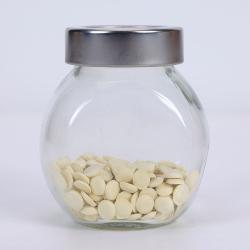Have you ever thought about what converts simple polymers into complex heat-resistant, impact-resistant materials in adhesives, plastics, or coatings? The answer can be found in the crosslinking agent which acts as a delicate chemical booster. Such agents strengthen performance by sharpening the bonds among polymer chains with the help of crosslinks. This article simplifies crosslinking agents – how they operate and their importance, the variety types, and the places from where intelligent consumers can buy them.
What is a Crosslinking Agent?
Let me start from the beginning. Crosslinking agents can be heterogeneous mixtures or complex compounds that do not exceed a certain molecular weight. These agents react with components of polymer chains; functional groups within them, to form crosslinks - bonds. With these bonds in place, crosslinkers can be crosslinked polymer chains. There are crosslinking agents that come classed as simple additives. That blend into a pure polymer, and get crosslinked chemically by distinct chains that result into a networked structure. The final product becomes more efficient than other alternatives.
How do Crosslinking Agents Work?
At the top most level, crosslinking agents have reactive sites like isocyanate, epoxy, hydroxyl and other groups. Available in the market crosslinking agents act like a caliper. These calipers grasp soft fibers from one end and pull them together to form rigid and solid fiber strainer mesh. A net brought about by the addition of tether limit mobility of the strands. The addition of net structure limits the mobility boosting mechanical strength and the polymer's resistance to chemical change.
Why are Crosslinking Agents Important?
Crosslinking agents are the unsung heroes behind countless industrial and consumer products.
They deliver critical improvements:
Mechanical robustness: Enhanced tensile and tear strength for longer-lasting coatings and elastomers.
Thermal stability: Resistance to softening or melting under elevated temperatures, essential in electrical insulators and automotive parts.
Chemical resistance: Greater tolerance to solvents, oils, and weathering for outdoor applications.
Dimensional integrity: Prevention of creep, shrinkage, or swelling in plastics and composites.
Without crosslinking, many polymers would lack the resilience and longevity required by modern applications.
Types of Crosslinking Agents
When selecting a crosslinker, it’s helpful to understand both its chemistry and its performance in your target application.
Here are three widely used agents we have—each offering unique benefits for different rubber and polymer systems:
TAIC (Triallyl Isocyanurate)
TAIC is a trifunctional allyl monomer often employed in peroxide-cured elastomers. Its three allyl groups enable rapid network formation, delivering:
-
High crosslink density for improved heat and solvent resistance
-
Excellent scorch safety, reducing premature cure during processing
-
Enhanced tensile strength and dynamic fatigue life
Ideal for silicone, EPDM, NBR, and other specialty rubbers, TAIC helps achieve stable mechanical properties under demanding conditions.
BH-41 IIR (Butyl Rubber Crosslinker)
BH-41 IIR is a proprietary crosslinking system tailored to isobutylene–isoprene rubber (IIR). Its features include:
-
Optimized cure rate matched to IIR’s low unsaturation level
-
Uniform network structure, minimizing compression set in seal and inner‐liner applications
-
Good process safety, with low odor and minimal volatiles
This agent is a go-to choice for tire inner liners, pharmaceutical closures, and vibration dampers where butyl rubber’s impermeability is critical.
TAIC-50 (High-Purity Triallyl Isocyanurate)
TAIC-50 is a purified grade of TAIC, boasting ≥50% active monomer content. Upgrading to TAIC-50 yields:
-
Faster cure times due to higher reactive concentration
-
Lower extractables, ensuring cleaner finished parts in food-contact or medical applications
-
Improved batch-to-batch consistency, critical for regulated industries
Use TAIC-50 when you need precision curing and stringent purity—such as in medical tubing, pharmaceutical stoppers, or high-performance wire and cable compounds.
Selecting the right type depends on polymer compatibility, processing temperature, cure schedule, and end-use requirements.
Where to Buy Crosslinking Agents
For bulk industrial orders or specialty formulations, these channels are popular among procurement teams:
Chemical distributors offer a broad catalog and technical support.
Manufacturer direct (e.g., Beihua) often provides custom grades and application guidance.
Online industrial marketplaces like ChemDirect or Alibaba facilitate small-batch sampling.
Regional suppliers specializing in coatings or rubber additives can expedite local delivery and regulatory compliance.
When choosing a supplier, consider lead time, technical datasheets, safety certifications (REACH, RoHS), and the availability of application trials or lab support. Feel free to contact us!
 cwc@jxbh-masterbatch.com
cwc@jxbh-masterbatch.com 嘉興北華高分子助剤有限公司 / 上海クリスタルウェルズ化学新材料有限公司 / 上海クリスタルウェルズ化学新材料有限公司
嘉興北華高分子助剤有限公司 / 上海クリスタルウェルズ化学新材料有限公司 / 上海クリスタルウェルズ化学新材料有限公司



































